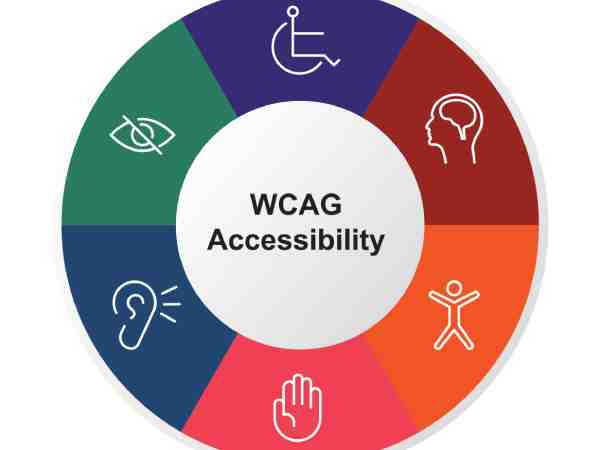Website accessibility compliance under the Americans with Disabilities Act has transitioned from recommended to legally mandated across digital platforms. Failure to meet ADA standards exposes businesses to substantial litigation risks while damaging brand integrity through accessibility barriers in your electronic information systems.
This compliance requires making web content fully accessible through perceivable interfaces, keyboard operability for assistive tools, and an understandable navigation architecture. Our guide examines how implementing WCAG guidelines transforms Web Accessibility (ADA) compliance into a strategic risk management framework through six actionable protection principles.
Defining the Legal Mandate for Digital Inclusivity
For over two decades, legal precedent has solidified that websites constitute “places of public accommodation” under the Americans with Disabilities Act (ADA), requiring digital accessibility for all users. The ADA compliance mandate ensures organizations remove barriers for individuals across the visual, auditory, cognitive, and physical spectrums of disability, guaranteeing equal digital engagement regardless of ability.
Explicit coverage extends across three categories:
- All public sector services are provided through U.S. state and local governments.
- Private businesses with employees operating public accommodations.
- Tax-exempt non-profit organizations, regardless of revenue or operational size.
This includes but is not limited to:
- Educational institutions & vocational programs
- Hospitality providers & retail establishments
- Healthcare facilities & financial service platforms
While often confused with Section 508 standards for federal agencies, ADA’s jurisdictional authority extends broader. Whereas Section 508 governs technology procurement by federal departments, the ADA represents sweeping civil rights law encompassing all facets of public engagement. This distinction carries critical weight, as Title III lawsuits target commercial sites beyond federal jurisdiction.
With this scope established, organizations must next confront the material risks created by compliance shortcomings – risks that cascade far beyond courtroom penalties into operational paralysis.
The High Stakes of Non-Compliance for Your Organization
Failure to comply with Website Accessibility (ADA) standards is no longer a theoretical risk but a tangible threat, as lawsuits related to it are filed annually in the U.S. For project managers and legal counsel, understanding these compounding liabilities is critical. The consequences are not just financial; they impact your entire organization’s stability and reputation.
Crippling Litigation and Settlement Costs: Organizations face average settlement costs ranging from $5,000 to over $20,000, plus steep legal fees. Choosing to remediate after a lawsuit can cost three to five times more than proactive compliance.
Substantial Regulatory Fines: Beyond private litigation, federal law permits fines of over $100,000 per violation, adding another layer of severe financial penalty.
Intense Reputational Damage: A lawsuit inevitably attracts negative media coverage. This can deter corporate partners and erode public trust, causing long-term harm to your brand’s integrity.
Significant Loss of Customers and Donor Attrition: Inaccessibility alienates a vast user base. This results in a direct loss of customers for businesses and critical donor attrition for non-profits, especially as they are increasingly targeted in litigation.
Undermining Trust with Stakeholders: Potential funders and partners often view an inaccessible website as a sign of broader operational neglect. This perception can jeopardize funding and strategic relationships by fundamentally undermining trust.
These risks demonstrate that proactive compliance is an essential strategic priority. To move from a position of risk to one of assurance, let’s explore the foundational principles for building your accessibility framework.

Understanding the WCAG Framework for Accessibility
While the ADA sets the legal mandate for inclusivity, the Web Content Accessibility Guidelines (WCAG)—developed by the World Wide Web Consortium (W3C)—provide the definitive “how-to” framework for achieving compliance through technical implementation. WCAG 2.2, released in October 2023, is the internationally recognized benchmark for U.S. organizations and state/local governments to follow.
The guidelines outline three conformance levels:
- A (minimum requirements)
- AA (recommended standard)
- AAA (aspirational targets)
Achieving Level AA compliance delivers robust protection against web accessibility lawsuits while maintaining operational feasibility for most enterprises.
At its core, WCAG operates through four foundational principles (POUR):
- Perceivable: Provide text alternatives like alt descriptions for images and closed captions for video content, ensuring all users can access information regardless of sensory abilities.
- Operable: Ensure full keyboard navigation, including “skip navigation” links, allowing users with motor disabilities to browse interfaces without needing precise mouse control.
- Understandable: Present content through clear language and maintain consistent navigation patterns for intuitive user journeys across digital platforms.
- Robust: Code web pages using current standards to guarantee compatibility with today’s screen readers and adapt to future assistive technologies without losing functionality.
Implementing this POUR framework transcends checkbox compliance—it creates the foundation for truly inclusive digital experiences while positioning organizations to capitalize on strategic benefits covered in our next section.
Transforming Compliance into a Strategic Brand Advantage
Beyond risk mitigation efforts addressed earlier, Website Accessibility (ADA) compliance represents a transformative business strategy rather than a mere technical obligation. At its core, proactive Website Accessibility compliance forms an essential component of modern Corporate Social Responsibility (CSR) and Ethical Governance frameworks – one that directly enhances operational resilience while driving value creation.
This strategic shift directly strengthens organizational reputation as an inclusive enterprise by:
- Expanding market reach to serve over 60 million Americans living with disabilities
- Improving customer experiences through universal design principles that benefit all users
- Future-proofing digital infrastructure against evolving regulatory landscapes and consumer expectations
Furthermore, aligning accessibility commitments with your organizationʼs mission builds critical Brand Resilience – shielding against market volatility while positioning stakeholders as leaders in inclusive digital innovation. The IRS’s Disabled Access Credit further enhances the strategic value equation through tax incentives of up to $15,000 annually for accessibility improvements.
Also Read: A Practical Guide to Understanding Website Analytics with GA4
Securing Your Future with Proactive Accessibility
Ultimately, Website Accessibility (ADA) compliance isn’t about checking regulatory boxes – it’s the cornerstone of modern risk management and ethical brand governance. By embedding digital accessibility into your organizational DNA, you cultivate unshakeable brand resilience while future-proofing operations against evolving standards.
This transformation into a truly inclusive enterprise starts with confronting hard realities – beginning with your website’s current compliance gaps. Initiate an enterprise-grade website auditing process today to quantify risks and blueprint a compliance roadmap tailored to your digital sustainability needs.








Leave a Reply
You must be logged in to post a comment.